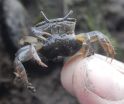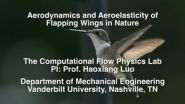(Press-News.org) A protein that stimulates the brain to awaken from sleep may be a target for preventing Alzheimer's disease, a study by researchers at Washington University School of Medicine in St. Louis suggests.
In recent years, scientists at Washington University have established links between sleep problems and Alzheimer's. For example, they have shown in people and in mice that sleep loss contributes to the growth of brain plaques characteristic of Alzheimer's, and increases the risk of dementia.
The new research, in mice, demonstrates that eliminating that protein - called orexin - made mice sleep for longer periods of time and strongly slowed the production of brain plaques.
"This indicates we should be looking hard at orexin as a potential target for preventing Alzheimer's disease," said senior author David M. Holtzman, MD, head of the Department of Neurology. "Blocking orexin to increase sleep in patients with sleep abnormalities, or perhaps even to improve sleep efficiency in healthy people, may be a way to reduce the risk of Alzheimer's. This is important to explore further."
The research appears Nov. 24 in The Journal of Experimental Medicine.
Brain plaques, which are mostly made of a protein called amyloid beta, accumulate in the brain before the onset of Alzheimer's symptoms such as memory loss, personality changes and disorientation. These plaques continue to collect as the disease progresses. Scientists think that slowing or stopping this buildup could slow or stop the disease.
In the current study, the researchers worked with mice genetically engineered to develop a buildup of amyloid in the brain, which is characteristic of Alzheimer's disease. When the researchers bred these mice with mice lacking the gene for orexin, their offspring slept longer and developed only half as many Alzheimer's plaques, compared with the mice that had the orexin protein.
Orexin is made by cells in the brain's hypothalamus that stimulate wakefulness.
"These cells have branches that carry orexin throughout the brain, and the protein acts like a switch," said Holtzman, the Andrew B. and Gretchen P. Jones Professor of Neurology. "If you stimulate orexin production in sleeping mice, they wake up immediately."
Low orexin levels are associated with narcolepsy, a condition marked by excessive sleepiness and frequent daytime sleeping spells. The mice with no orexin typically slept an extra hour or more during the 12-hour period when mice with orexin became more active.
When scientists reversed the experiment and artificially increased orexin levels throughout the brain, the mice stayed awake longer and developed more Alzheimer's-like plaques.
But if the researchers changed orexin levels only in part of the brain - a change that did not affect the amount of time mice slept - plaque levels were unaffected.
"The fact that orexin can only affect plaques when it also affects sleep means we will have to think carefully about how to target it for Alzheimer's prevention," Holtzman said. "But the declines in plaque levels that we saw in the mice were very strong, so we're still very interested in exploring its potential for reducing risk."
He and his colleagues, including first author Jee Hoon Roh, MD, PhD, currently are studying the effects of sleep medications on amyloid beta production and plaque accumulation. The FDA recently approved Belsomra, the first sleep medication that affects orexin, and the researchers hope to assess it or similar drugs in the future.
INFORMATION:
This work was supported by the American Academy of Neurology Clinical Research Training Fellowship; the Basic Science Research Program through the National Research Foundation of Korea (NRF) funded by the Ministry of Science, ICT and Future Planning (MSIP), 2013R1A1A1012925; an NRF MRC grant funded by the Korean government (MSIP), 2008-0062286; the Korea Institute of Science and Technology Institutional Program, 2E24242-13-110; grants 2014-0783, 2014-7203 and 2014-9077 from the Asan Institute for Life Sciences; an Ellison Medical Foundation Senior Scholar Award; the National Institutes of Health (NIH), P01NS074969, R01NS090934 and P30NS057105; the JPB Foundation; and the Cure Alzheimer's Fund.
Roh JH, Finn MB, Stewart FR, Mahan TE, Cirrito JR, Heda A, Snider BJ, Li M, Yanagisawa M, de Lecea L, Holtzman DM. Potential role of orexin and sleep modulation in the pathogenesis of Alzheimer's disease. The Journal of Experimental Medicine. Published online Nov. 24, 2014.
Washington University School of Medicine's 2,100 employed and volunteer faculty physicians also are the medical staff of Barnes-Jewish and St. Louis Children's hospitals. The School of Medicine is one of the leading medical research, teaching and patient-care institutions in the nation, currently ranked sixth in the nation by U.S. News & World Report. Through its affiliations with Barnes-Jewish and St. Louis Children's hospitals, the School of Medicine is linked to BJC HealthCare.
WASHINGTON, Nov. 24, 2014 -- The season of giving is often also the season of over-indulging at the dinner table. As Thanksgiving approaches, Reactions takes a look down at our stomachs to find out what happens when you overeat. Put on your "eating pants" and enjoy the video here:
Subscribe to the series at Reactions YouTube, and follow us on Twitter @ACSreactions to be the first to see our latest videos.
INFORMATION:The American Chemical Society is a nonprofit organization chartered by the U.S. Congress. With more than 161,000 members, ACS is the world's largest scientific ...
How does glass transition from a liquid to its familiar solid state? How does this common material transport heat and sound? And what microscopic changes occur when a glass gains rigidity as it cools?
A team of researchers at NYU's Center for Soft Matter Research offers a theoretical explanation for these processes in Proceedings of the National Academy of Sciences.
Our understanding of glasses as they change state is relatively limited. This is because, unlike other materials such as metals, their constituent particles--which can be as small as a billionth of a meter ...
People who see their group as more homogenous - for instance, the more one thinks Americans are similar to each other - are less likely to be influenced by external terrorist threat alerts, according to research from NYU's Steinhardt School of Culture, Education, and Human Development.
"Among people who viewed their group to be homogeneous, external threat did not translate to higher perceived threat, and they did not influence beliefs about the legitimacy of the U.S. military intervention in Iraq," said study author Rezarta Bilali, assistant professor of psychology and ...
ANN ARBOR--The medical community may be inadvertently creating a new generation of illegal, recreational drug users by prescribing anti-anxiety or sleep medications to teenagers, say University of Michigan researchers.
Teens prescribed anxiety or sleep medications are up to 12 times more likely to abuse those drugs than those who had never had a prescription, either by using someone else's prescription pills or to get high or experiment, according to a study from the U-M School of Nursing.
Nearly 9 percent of the 2,745 adolescent study participants had received ...
A team of scientists from Arizona State University's Biodesign Institute and IBM's T.J. Watson Research Center have developed a prototype DNA reader that could make whole genome profiling an everyday practice in medicine.
"Our goal is to put cheap, simple and powerful DNA and protein diagnostic devices into every single doctor's office," said Stuart Lindsay, an ASU physics professor and director of Biodesign's Center for Single Molecule Biophysics. Such technology could help usher in the age of personalized medicine, where information from an individual's complete DNA ...
SAN FRANCISCO (November 24, 2014) --A team of scientists, including researchers from the California Academy of Sciences, has reconstructed a detailed "tree of life" for turtles. The specifics of how turtles are related--to one another, to other reptiles, and even to dinosaurs--have been hotly debated for decades. Next generation sequencing technologies in Academy labs have generated unprecedented amounts of genetic information for a thrilling new look at turtles' evolutionary history. These high-tech lab methods revolutionize the way scientists explore species origins and ...
Members of the public in sub-Saharan Africa who are carriers of the hereditary disease sickle cell disease must be educated aggressively through public health campaigns to raise awareness of the risks of parenting offspring with the disease if their partner is also a carrier, according to research published in the International Journal of Medical Engineering and Informatics.
There are many physical and emotional public health components of sickle cell disease, explains William Ebomoyi of the Department of Health Studies College of Health Sciences, Chicago State University, ...
A collaboration between NEC Electronics Samsung and several academic centres in China and Iran, is investigating how software-defined cellular networking might be used to give smart phone users the next generation of super-superfast broadband, 5G. They provide details in the International Journal of Communication Networks and Distributed Systems.
Currently, the fourth generation of mobile phone connection technology, 4G, in as far as it has been adopted provides broadband-type connectivity for enabled devices such as smart phones, tablet computers, laptops and other gadgets ...
WOODS HOLE, Mass.--David Johnson was standing in a salt marsh on the northern Massachusetts coast when he saw a fiddler crab, Uca pugnax, nearly 50 miles north of its supposed natural range. The migration north of this charismatic crab with the big, waving claw may be yet another sign of climate change. Johnson, then a scientist at the Marine Biological Laboratory (MBL) Ecosystems Center, has published his observations in the Journal of Crustacean Biology.
The fiddler crab is an attention-getting crustacean; the males have an oversized claw that they use to attract a ...
VIDEO:
The most detailed aerodynamic simulation of hummingbird flight conducted to date demonstrates that it achieves its aerobatic abilities through a unique set of aerodynamic forces more closely aligned to those...
Click here for more information.
The sight of a tiny hummingbird hovering in front of a flower and then darting to another with lightning speed amazes and delights. But it also leaves watchers with a persistent question: How do they do it?
Now, the most detailed, ...





